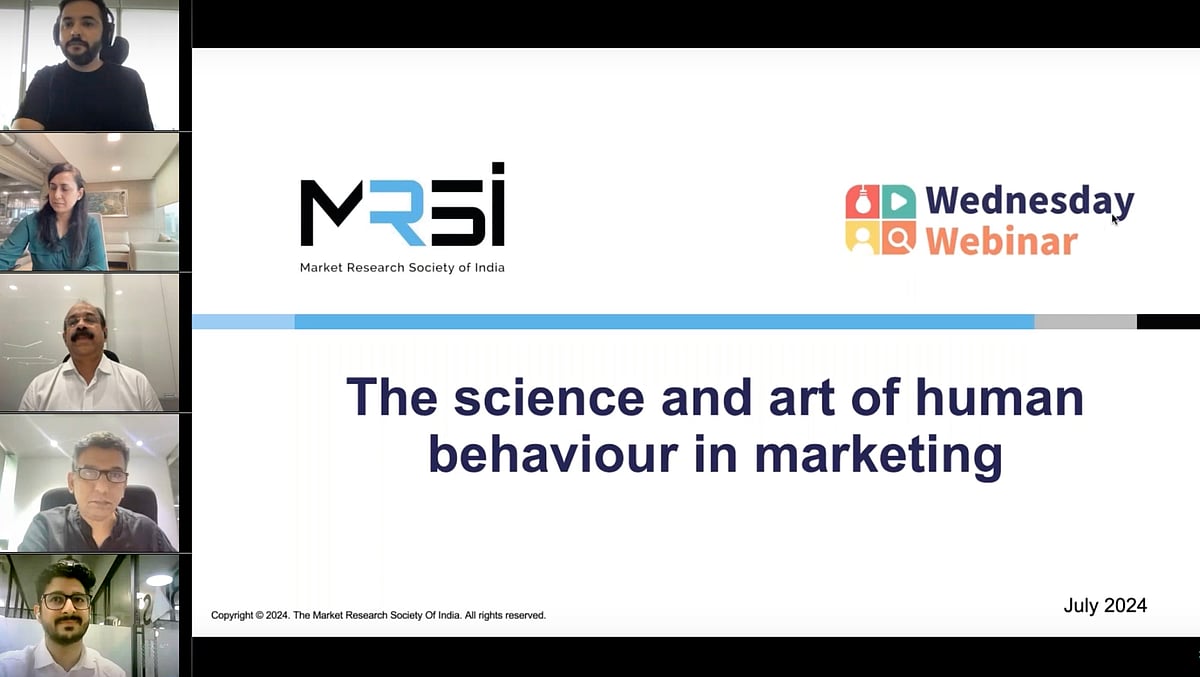The Market Research Society of India conducted a webinar to examine the failings of marketing science and what is being done to improve processes to fetch desired outcomes. The panellists were Biju Dominic, Chief Evangelist at Fractal Analytics & Chairman, FinalMile Consulting; Varun Arora, COO & Member of BMB (BIAS Management Board), Behavioural Insights, Architecture & Strategy Pvt Ltd (BIAS); Geetika Kambli, Managing Partner at Centre for Behavioural Research, Future Factory; and Kartik Sharma, Group CEO, Omnicom Media Group India.
Biju kicked off the session with a revelation that over the duration of his career, he has discovered that any marketing or policies that relied on rational human behaviour had a huge failure rate. Behavioural economics then introduced him to the concepts of irrational behaviour, heuristics and mental shortcuts.
The work of Francis Crick brought him to concur that neuroscience is the real new science of human behaviour. “Of the 11 million bits of processing that we have, just 77 of them work at a conscious level and that's a biological truth.” This new learning dramatically changed the construct of the human behaviour universe, proving that the non-conscious, emotional self is the predominant factor.
Varun then brought into our understanding five categorisations of behaviour. Take, for example, you're supposed to brush your teeth twice a day. If you do it only once, it would be considered ‘sub-optimal’. If you forget to do it at all, it is ‘negative or deviant’. ‘Absent’ would mean not believing in brushing.
A ‘positive deviant’ would be someone who does it twice and makes a visit to the dentist every six months and finally, behaviour ‘as intended’ is the person who brushes twice a day. For every kind of behaviour, researchers need to uncover insights to understand implicit biases.
From the Center for Behavioral Research at Future Factory, Geetika talks about building products with ‘the human experience’ at its centre. She explained two concepts: ‘Cognitive context’, which asks the question ‘What are people expecting out of laundry?’ rather than ‘What are people expecting a washing machine to do?’ This way, researchers get into the category and away from the product.
‘Physical context’ then helps you come up with a framework when examining new product design. Here, you ask questions about where the product and its consumables are placed and the different parts of that journey.
Kartik Sharma brought to our attention a study that concurred people make impulse purchases during stressful moments. This is a concept called ‘ego depletion’, and brands can use it to their advantage by increasing their stock-up in food dispensers during exams when a student’s ego has been depleted from studying and high stress. Next, brands use ‘social proof’ to validate purchase decisions in the form of certifications and celebrity endorsements.
.png)
The ‘halo effect’ is behaviour that shows how a consumer’s overall judgement is often based on a single positive trait. And ‘framing’ is a technique used to make products more appealing. For example, saying something is ‘75% fat-free’ vs ‘Only 25% fat’ creates different behavioural outcomes. Similarly, using nouns over verbs works better. Like the difference between ‘thank you for subscribing’ vs ‘thank you for being a subscriber’.
The session paved the way for a better understanding for policy makers and brands to serve people. It also served as a platform for the panellists to discuss their insights over years of research and what they are doing to improve the behavioural understanding of marketers. “Beyond the threshold of culture, human nature is universal,” concluded Biju.










